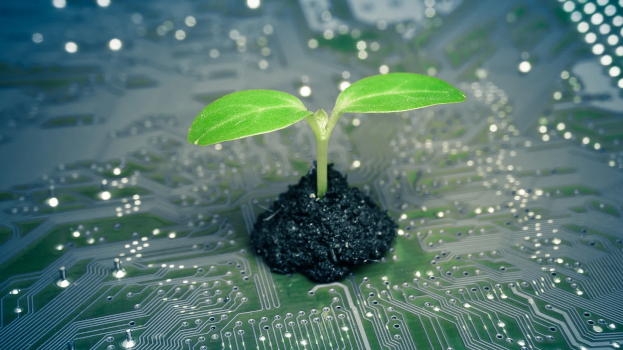
Shifting energy market an opportunity for data centres
The modern conception of the electricity grid as a smart utility capable of managing its own load and adjusting its balance of renewable and non-renewable energy sources seems far away, but moves are ongoing to bring this vision to life. Similarly, consumers are getting more informed about the energy they consume and how they can cut down on bills and output. Stuck in the middle are the data centres driving the economy, trying to match exploding demand in a sustainable manner. So how does Ireland meet its carbon reduction commitments when homes are trying to use less power while data centres need more?
Niall Kitson (NK) was joined by Enel X head of operations for UK & Ireland John Byrne (JB) and Russ Barker (RB), product & service sales director, UK & Ireland, to discuss the changing market on TechRadio.
NK: The energy market has had to shift in line with the demands that have been placed on the grid with this move towards home working. What have you seen in patterns of energy usage?
JB: There’s certainly been a move towards remote working and cloud services. And that appears to be changing the energy markets. There’s an ongoing fundamental shift, certainly during Covid-19 but we’ve even seen before then. There’s been a 40% surge in data usage between February last year and April last year. And, obviously, this is due to increases in video streaming, remote working from Covid-19. However, even before we locked down, data consumption was on as a well-established, long-term growth trajectory driven by the number of devices, content streaming, etc.
NK: So, this sort of encompasses that move from business to the home on from the high street to e-commerce services. One imagines this reconfiguration of energy demand changes things from managing the large building to the home office. Is this a kind of ‘consumerisation’ of the energy market?
JB: Absolutely. Look at the growth in remote working and [as a result] electrical consumption in data centres. We know data centres consume huge, huge amounts of power, obviously, for cooling of racks, and I think we expect to see an increase a 15-fold increase by 2030. Up to 8% of projects, total global electricity demand, which is up from 1%, just a short time ago.
NK: Russ, at vertiv, you have a slightly different perspective. What challenges do you see the data centre industry specifically dealing with?
RB: The data centre industry is primarily about that revolve around how quickly it’s growing. The government chief information officer came out with a report that it’s looking for a reset of planning permission for data centres in Ireland. By 2030 8% of global demand will be in data centres, while in Ireland, you’re already at 11% of your of your domestic demand and that’s heading to 19% and up to 25% by 2030. That’s a really unusual scenario in terms of the amount of data centre power being taken against domestic consumption. It clearly puts a huge load on the existing supply time when Ireland is trying to decarbonise. So it’s driving the narrative of data centres taking all the power and it’s suggesting we need to have a look and see what the future looks like.
When John is talking about the increase of renewables, what this creates is a less resilient grid or less fault-tolerant grid. You need to provide some demand-side services where you can load shut when you need to and provide frequency response services. The equipment we provide into data centres can do that.
What looks to be happening with the CRU [Commission for Regulation of Utilities] is going to be a legislative drive to make sure that those services are in place. If that happens, you move from a narrative of data centres taking all the power to data centres actually participating in the solution to that would meet its target of 70% of renewables by 2030.
NK: What do you envisage the data centre of the next 10 years looking like?
RB: I think you’ll still see the military-looking buildings without many identifying marks and all that wonderful stuff in the high fences for security. But I think if you look at it from the top down you will have data centres that are not just using power, but data centres are also producing power. In order to get a connection, you’re going to have to generate power on site.
Let’s say you build a data centre, you need to have a gas generation plant, which is able to power the data centre or return to power back into the grid – you’re producing power at times of high need for the domestic market.
The UPS that we provide, and the facilities that analysis we provide allow us to provide frequency response services within hundreds of milliseconds. This is not something that you can do by just removing demand, it has to be permanently connected and available. That allows you to react quickly to faults in the system, which are going to be more prevalent when you have much more renewable power, they’ll interact with that system.
In doing that, the data centre operators will actually gain revenue for provision of services at the same time as allowing Ireland to hit that 70% renewable energy target. It will also help them to gain the planning permission that they need to continue to operate in the country. From the top down, you’ll begin to see a data centre more as a complete energy centre. It kind of ties into your point about what’s going to happen in the home. We will all have solar, we will all have some sort of energy storage on site, it’s really that sort of move away from a centralised energy service to one where it’s much more distributed.
The full version of this interview is available below.







Subscribers 0
Fans 0
Followers 0
Followers